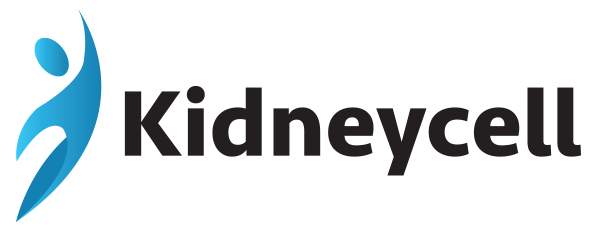KidneyCell Technology
KidneyCell is a startup within the Leonhardt Ventures Cal-X Stars Business Accelerator and Leonhardt’s Launchpads Utah focused on kidney regeneration.
The company utilizes bioelectric stimulation to control release of specific proteins on demand for specific regenerative purposes in sequence:
1. SDF-1 (stem cell homing factor – recruits a persons own stem cells to stimulated tissues)
2. VEGF (for new blood vessel growth).
3 IGF-1 (for DNA repair at the nucleus level).
4. Follistatin (for muscle and tissue regeneration).
5. RANKL (for demineralization and tissue loosening when needed).
6. Hepatocyte Growth Factor (tissue regeneration)
7. eNOS (for dilating blood vessels for increasing flow).
8. Tropoelastin (increases elasticity of any tissues such as skin, arteries, aorta, heart and promotes healing of wounds).
9. Activin A + B
10. EGF Epidermal Growth Factor (regeneration)
11. Klotho (kidney regeneration, hypertension treatment)
In extreme cases we combine our regeneration microstimulator with an implantable, programmable, re-fillable stem cell/growth factor micro pump.
In cases of kidney cancer we have special signals to stop tumor cell division and blood supply followed by the above regeneration protocol.




PRESS RELEASE
Leonhardt’s Launchpads Announces Filing of Patent for Bioelectric Stimulation Controlled Klotho Expression – Powerful Anti-aging and Regeneration Promoting Protein – Click Here
REFERENCES
(1) Renal and Extrarenal Actions of Klotho – Click Here
(2) Secreted klotho and chronic kidney disease. – Click Here
(3) Klotho/FGF23 Axis in Chronic Kidney Disease and Cardiovascular Disease – Click Here
(4) Association between Soluble Klotho and Change in Kidney Function: The Health Aging and Body Composition Study – Click Here
(5) Treating Systemic Klotho Deficiency – Click Here
(6) Correlation between Soluble α-Klotho and Renal Function in Patients with Chronic Kidney Disease: A Review and Meta-Analysis – Click Here
(7) SECRETED KLOTHO AND CHRONIC KIDNEY DISEASE – Click Here
(8) The Klotho proteins in health and disease – Click Here
(9) The Role of Klotho Protein in Chronic Kidney Disease: Studies in Animals and Humans – Click Here
(10) New Insights into the Mechanism of Action of Soluble Klotho – Click Here
(11) Klotho Protein an Overview – Click Here
(12) Loss of Klotho in CKD Breaks One’s Heart – Click Here
KEY POINTS
- The Klotho proteins αKlotho and βKlotho are essential components of endocrine fibroblast growth factor (FGF) receptor complexes, as they are required for the high-affinity binding of FGF19, FGF21 and FGF23 to their cognate FGF receptors.
- FGF21 is a starvation hormone that induces stress responses by activating the sympathetic nervous system and the hypothalamus–pituitary–adrenal axis.
- FGF19 is a satiety hormone that promotes metabolic responses to feeding.
- Klotho has been shown to exert pleiotropic actions, including cytoprotection, anti-oxidation, anti-apoptosis, protection of vasculature, promotion of angiogenesis and vascularization, inhibition of fibrogenesis and preservation of stem cells. The exact diagnostic and therapeutic role of Klotho in humans is not fully known yet.
- Klotho works as a circulating hormone or local autocrine/paracrine factor to exert pleiotropic actions. As in the case of regulation of TRPV5 channels, sKl may target sialic acids to exert its action in different contexts. Other potential mechanisms also exist.
- Inflammation is characterized by an activation of NFκB. Klotho suppresses nuclear factor NFκB activation and the subsequent transcription of proinflammatory genes.
- Mounting evidence indicates that Klotho is a multifunctional protein that regulates several pivotal signaling pathways, and therefore, its cardioprotective actions in CKD in vivo might be much more complex than targeting ROS/MAPK alone. In addition to interacting with FGF-23, recent studies show that secreted Klotho is able to bind to Wnt ligands, TGF-β type II receptor and FGF receptor-1, respectively, thereby modulating these pathogenic signaling.3,13,14 Because Wnt/β-catenin is a master regulator that controls the expression of multiple RAAS components,15 loss of Klotho in CKD would lead to hyperactivation of RAAS through derepressing Wnt/β-catenin. This will lead to salt and water retention, thereby promoting pressure and volume overload and hypertension, all of which could contribute to LVH.
- Although distant from each other, the kidney and the heart constantly engage in cross-talk through circulating factors. This study by Yang et al.6 shows that Klotho deficiency in the uremic state is a key factor mediating aberrant kidney and heart interactions. Such insights, as provided by this interesting study by Yang et al.,6 may lead to translational studies aimed at lowering CVD events and mortality in patients with CKD.



